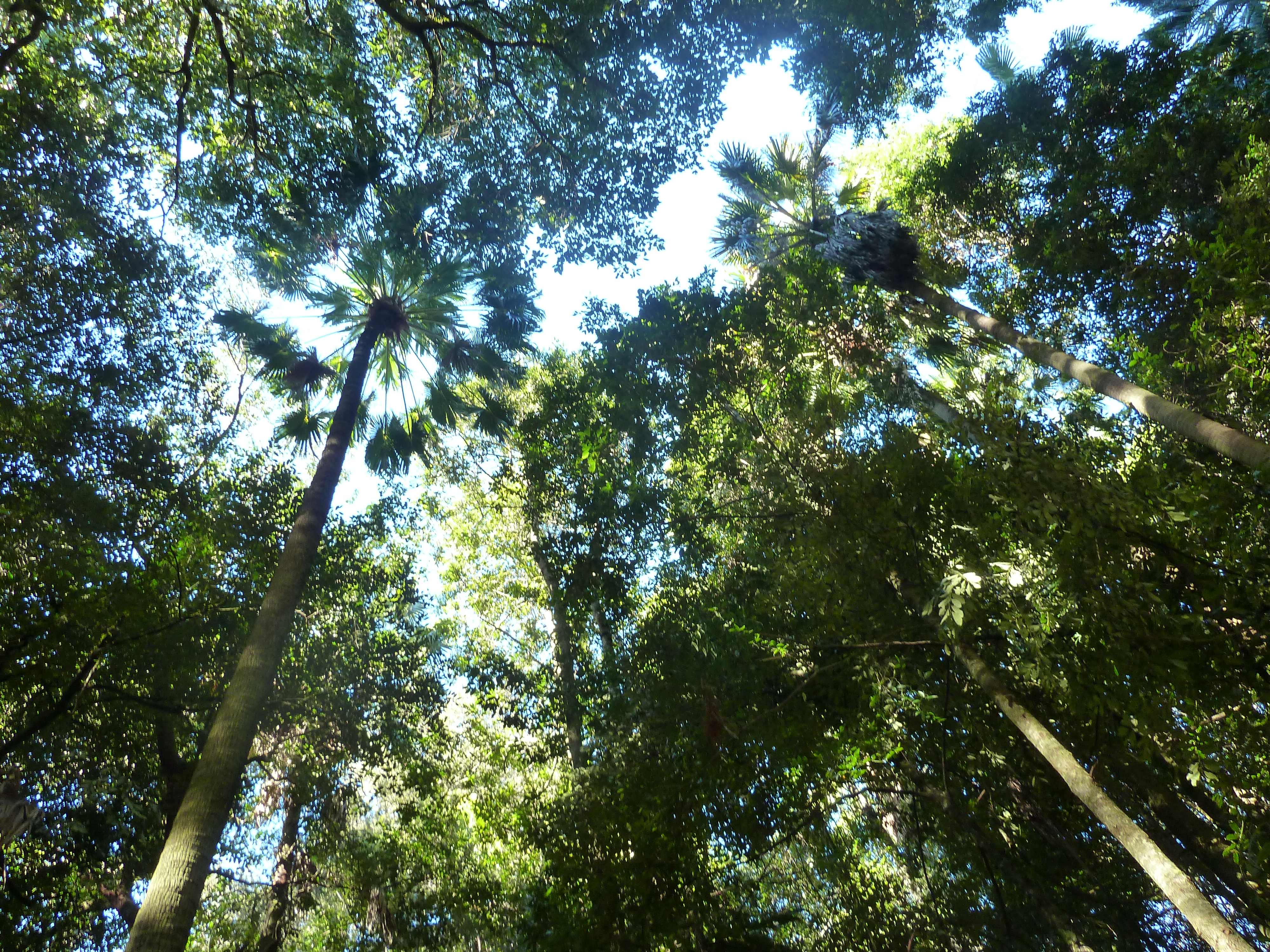Introduction
Rainforests in Australia are typically found in northern New South Wales, coastal Queensland and western Tasmania.
Biodiversity
Rainforests are areas of high biodiversity with many of the plants only being found in that environment. Rainforests have thick lush undergrowth and high canopies. Young trees are usually shade-tolerant until they break through to the top of the canopy.
Habitat layers
A rainforest has four layers with the highest being the emergent layer which includes the tallest trees and they are both heat and wind tolerant. The next layer down is the canopy and is the layer where the crowns of the trees meet and overlap. The understory contains the young trees and shrubs with larger leaves in order to maximise the reduced light available. The forest floor is the lowest level and is often quite open as very little light makes it to the ground.
Location
Dorrigo National Park is located in Northern New South Wales to the west of Coffs Harbour. Dorrigo National Park is part of the World Heritage listed Gondwana Rainforest Park which protects rainforests around the world. Dorrigo has an average rainfall of 1900mm per year with an average high of 20oC and low of 10oC. These climatic conditions provide the ideal conditions for rainforests along with beautiful waterfalls.
Rainforests in north-eastern NSW
Dorrigo National Park and the surrounding area include a variety of rainforests.
Sub-tropical
The luxuriant sub-tropical rainforest of Dorrigo National Park has many tall tree species which are home to epiphytic ferns, orchids and vines. Common trees include:
-
yellow carabeen
-
black booyong
-
strangler fig
-
prickly ash
-
black apple.
Warm-temperate
The warm-temperate rainforest of Dorrigo can thrive on poorer soil than the sub-tropical rainforest and is commonly found in the northern areas of the park. The dominant tree species are coachwood, hoop pines and sassafras. Tree and ground ferns are commonly found in the understory and forest floor layers.
Other Australian Rainforest
Cool-temperate
The cool-temperate rainforests of south-eastern Australia are limited by cooler climatic conditions and are very susceptible to the changing climate with shifting rainfall and temperature patterns affecting reproduction. The dominant species of trees are Antarctic beech, Huon pine and sassafras. The understory in the cool-temperate rainforest is very sparse.
Google Earth
An example of a New South Wales rainforest lies in the area around the Dorrigo National Park on Google Earth. To move out of street view level and look at the wider area click the yellow person icon in the bottom right hand corner. This resource will only work in the Google Chrome browser.
Significance

Rainforests have been called the ‘lungs of the Earth’ as they are responsible for absorbing a significant amount of carbon dioxide from the atmosphere. Rainforests are also thought to be a home for between 50 – 90% of all species in the world.
Endangered species
The rainforests of Australia provide an important habitat for a range of endangered mammals and reptiles. These include:
-
Spotted-tailed quoll
-
Bennett’s tree kangaroo
-
Golden-tipped bat
-
Little waterfall frog.
Climatic support
Rainforests assist in mitigating effects of changing weather patterns by acting as heat sinks, preventing erosion and by releasing moisture to the atmosphere.
World Heritage Listing
Dorrigo National Park was World Heritage listed in 1986 reflecting the importance of the rainforest within.
Conservation
The conservation of rainforests is vital in order to protect the many species of plants and animals that live within the various habitat zones. Dorrigo National Park is one of the many parks within the Gondwana Rainforest parks network which exists to protect the largest areas of subtropical rainforest around the world.
Introduced plants and animals
Introduced plants and animals pose significant threats to native plants and animals as they either compete for resources or predate on native mammals and birds.
Introduced animals include:
-
foxes
-
rabbits
-
wild dogs
-
feral cats
-
goats
-
black rats.
Introduced plants include:
-
madeira vine
-
lantana
-
mistflower
-
small-leafed privet.
Environmental education centres
Cascade EEC conducts day trips and overnight excursions for students K-12 in the rainforests of the Cascade and Dorrigo areas.
These trips are aimed at immersing students into the environment and empowering them to investigate these ecosystems and develop knowledge and skills to benefit both the forests and future generations. We welcome enquiries about our school camp and day trip programs.
Other Environmental Education Centres that provide access to rainforests include:
-
Dorroughby (North Coast)
-
Illawarra (South Coast)
-
Thalgarrah (New England)
-
Rumbalara (Hunter/Central Coast)
Further information
Web links:
-
General information on rainforests (Wikipedia)
-
Office of Environment and Heritage, National Parks and Wildlife Service website on Dorrigo National Park.
-
Office of Environment and Heritage website on Illawarra Subtropical Rainforest
-
Big Volcano (Wollumbin) Visitor Guide - Gondwana Rainforests Types of Australia
-
Bush Heritage Australia – Nameless Sylvan Reserve
-
ABC Local website – The key to regenerating rainforest
-
Office of Environment and Heritage website on Northern Warm Temperate Rainforests
-
Office of Environment and Heritage website on Southern Warm Temperate Rainforests
-
Australia: The Land Where Time Began – Warm Temperate Rainforests
-
Plants in Action – Epiphytes